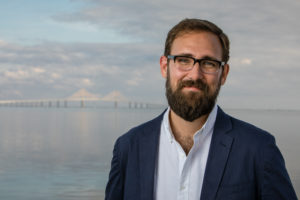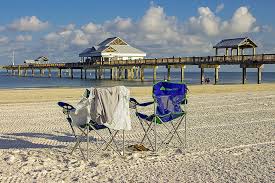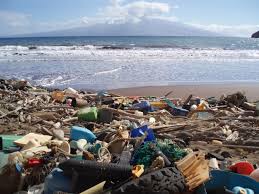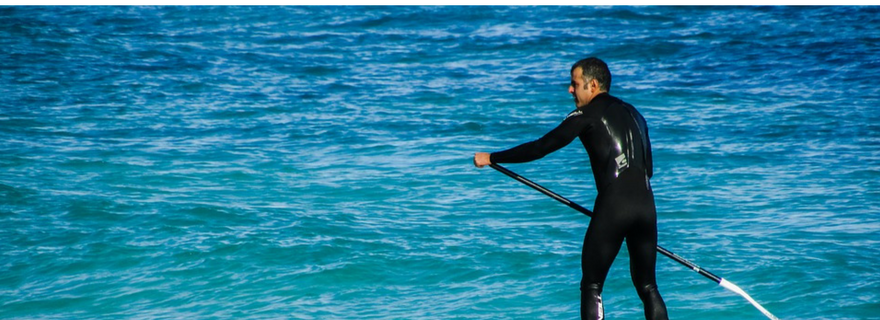 For Tampa Bay Waterkeeper Andy Hayslip, the focus isn’t as much about keeping an eye out for polluters as it is on engaging new people and organizations that haven’t been part of the bay’s decades-long restoration.
For Tampa Bay Waterkeeper Andy Hayslip, the focus isn’t as much about keeping an eye out for polluters as it is on engaging new people and organizations that haven’t been part of the bay’s decades-long restoration.
“There’s an enormous body of knowledge and success stories here but we’re looking for ways to fill in the gaps,” said Hayslip, who has worked for the Florida Fish and Wildlife Conservation Commission as well as serving as a planner for the cities of Clearwater and Bradenton and the Waterkeeper in Watauga River Basin near Boone, NC. “We’ll take a holistic approach and work as collaboratively as possible.”
 The Tampa Bay Waterkeeper’s structure shows that “outside the choir” focus, with a board of directors employed by organizations as diverse as the American Heart Association, Pricewaterhouse Coopers and Smith & Associates Real Estate. “We all come from different worlds but we’re all passionate about being advocates for our water resources.”
The Tampa Bay Waterkeeper’s structure shows that “outside the choir” focus, with a board of directors employed by organizations as diverse as the American Heart Association, Pricewaterhouse Coopers and Smith & Associates Real Estate. “We all come from different worlds but we’re all passionate about being advocates for our water resources.”
Formed in the 1960s and considered to be an important part of the modern environmental movement, the Waterkeeper Alliance is now among the largest not-for-profits in the nation focused solely on clean water. And while many of its chapters use litigation to force governments to clean up pollution, Hayslip says that Tampa Bay has come so far, he will be focusing on building consensus rather than filing lawsuits.
 “We’re cautiously optimistic,” said Maya Burke, technical projects director at the Tampa Bay Estuary Program. “ We are hopeful that there are ways that the Waterkeeper Alliance can make sense for the ongoing restoration of Tampa Bay.”
“We’re cautiously optimistic,” said Maya Burke, technical projects director at the Tampa Bay Estuary Program. “ We are hopeful that there are ways that the Waterkeeper Alliance can make sense for the ongoing restoration of Tampa Bay.”
The first Waterkeeper initiative in Tampa Bay brings a national water quality monitoring program to local residents. The app/website compiles water-quality data from multiple government agencies as well as citizen volunteers. Called the Swim Guide, it provides users with simple red or green icons with information on water safety from more than 7,000 beaches and lakes around the world.
 “In Tampa Bay, we’ll be working with the EPC (Environmental Protection Commission of Hillsborough County) and the state Department of Health to populate the app, plus we’ll look for gaps that need to be monitored,” he said. A key focus will be harmful bacteria levels and they have begun fundraising for a testing lab with equipment and staff certified by the Environmental Protection Agency.
“In Tampa Bay, we’ll be working with the EPC (Environmental Protection Commission of Hillsborough County) and the state Department of Health to populate the app, plus we’ll look for gaps that need to be monitored,” he said. A key focus will be harmful bacteria levels and they have begun fundraising for a testing lab with equipment and staff certified by the Environmental Protection Agency.
“The goal would be to take samples on Wednesday, run water quality tests with scientific staff and trained volunteers on Thursday and then publish results on Friday, when people start making weekend plans,” he said. “The ultimate goal is to build trust, get more people recreating on the water and becoming better conservationists.”
At the same time, monitoring water quality will allow Waterkeepers to track trends in potential water quality problems upstream, identify the source, then take appropriate action, he notes.
 Over time, Hayslip expects to become involved in city and county comprehensive plans and land use issues, particularly focusing on coastal resiliency. “I’m already a member of the Living Shorelines project funded through the RESTORE Act (from the Deepwater Horizon oil spill) and I think that’s one way we can push the needle. As a former planner, I’m an advocate of smart land use and transportation, particularly a sustainable transportation policy.”
Over time, Hayslip expects to become involved in city and county comprehensive plans and land use issues, particularly focusing on coastal resiliency. “I’m already a member of the Living Shorelines project funded through the RESTORE Act (from the Deepwater Horizon oil spill) and I think that’s one way we can push the needle. As a former planner, I’m an advocate of smart land use and transportation, particularly a sustainable transportation policy.”
Marine debris also is a focus, through a partnership with the Surfrider Foundation’s Rise Above Plastics campaign. “We’ll be part of their education and outreach efforts as well as their legislative agenda,” he said. “California passed legislation outlawing plastic bags about 18 months ago, and it turned out to be no big deal a year later.”
The Waterkeeper Alliance is a grassroots organization begun in 1960’s New York by a group of fisherman. Over the decades, they’ve become an important legacy that shows how passionate citizens with an avenue to voice concerns can result in positive changes. The now international Waterkeeper Alliance traces its origin to citizens unhappy with power plant impacts to fish populations who demanded accountability for pollution and impacts to the Hudson River’s natural resources and desired a voice that was heard by decision makers on issues impacting the Hudson River. The efforts of those fishermen over five decades ago resulted in the first Riverkeeper for the Hudson River, and the organization has grown to 300 Waterkeeper organizations and affiliates around the world.
For more information, visit http://tampabaywaterkeeper.org/
[su_divider]